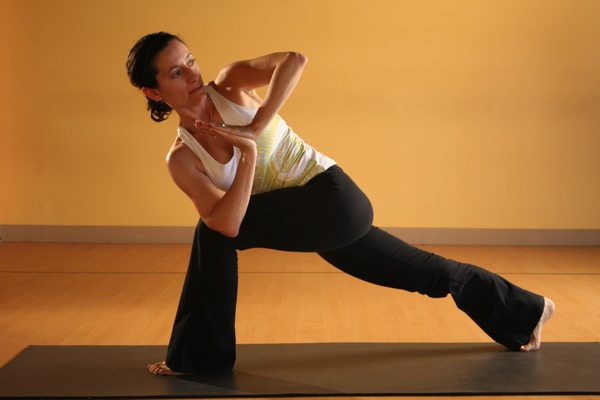
Want a new treatment for side effects like insomnia, mood swings, constipation, and other aches and pains? Never mind the drugs. Your body has had enough. Instead, try taking yourself to a yoga class.
“Something magical happens when you do a total and complete class,” says certified yoga teacher and therapist, Laura Kupperman (also a Cinco Vidas expert).
Particularly if you go to a class for cancer survivors (recommended), you’ll enjoy a unique camaraderie you’ll be unlikely to find anywhere else. If you’ve just been diagnosed, you may meet up with someone who’s already been through the treatment, or someone who’s survived for years.
“There’s a great sense of acceptance,” Kupperman says. “Everyone’s been through something. But it’s not a support group. The focus isn’t on what’s going wrong, but rather, on doing something healthy and positive for our bodies.”
Since yoga requires a steady focus on the breath, it tends to quiet the mind. Kupperman comments: “My students tell me, ‘I come to yoga, and it’s so nice, as I have to stay focused on what’s going on, so I can’t think about all the other stuff.’ Through yoga practice, we learn to be more present in the moment, which is so helpful in all areas of our lives.”
Yoga also addresses specific physical problems. Kupperman, a breast-cancer survivor, explains. “If you’ve had a bilateral mastectomy, for instance, you’re going to have scar tissue and muscular guarding. It’s your body’s way of protecting the injured area, but it causes the chest to get tight. Pretty soon the whole front of the body is rounded forward, weakening the upper back and shoulder muscles, compressing the breath, and often causing back pain. Certain yoga poses gently open up the front of the body and strengthen the back, making it easier to breathe full, deep breaths, increasing energy, and reducing aches and pains.”
Many poses can help minimize the side effects of cancer. Look to future posts for more information on these particular poses and sequences. In the meantime, Laura recommends looking for a good class to get the full benefits. (Be sure to check with your doctor before starting.) Classes specific to cancer fighters and survivors are best. If you don’t have one, try to find an instructor schooled in working with cancer patients. (Check out the International Association of Yoga Therapists, or YogaClassSearch.com.)
“Yoga gives you this great toolbox of things you can use to feel better,” Kupperman says. “It teaches you to say, ‘Here’s how I feel right now, in this moment, and here’s what I need to do to take care of it.”
If yoga has helped you on your journey, please share your experience with us.
Photo courtesy of Laura Kupperman

